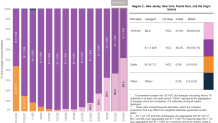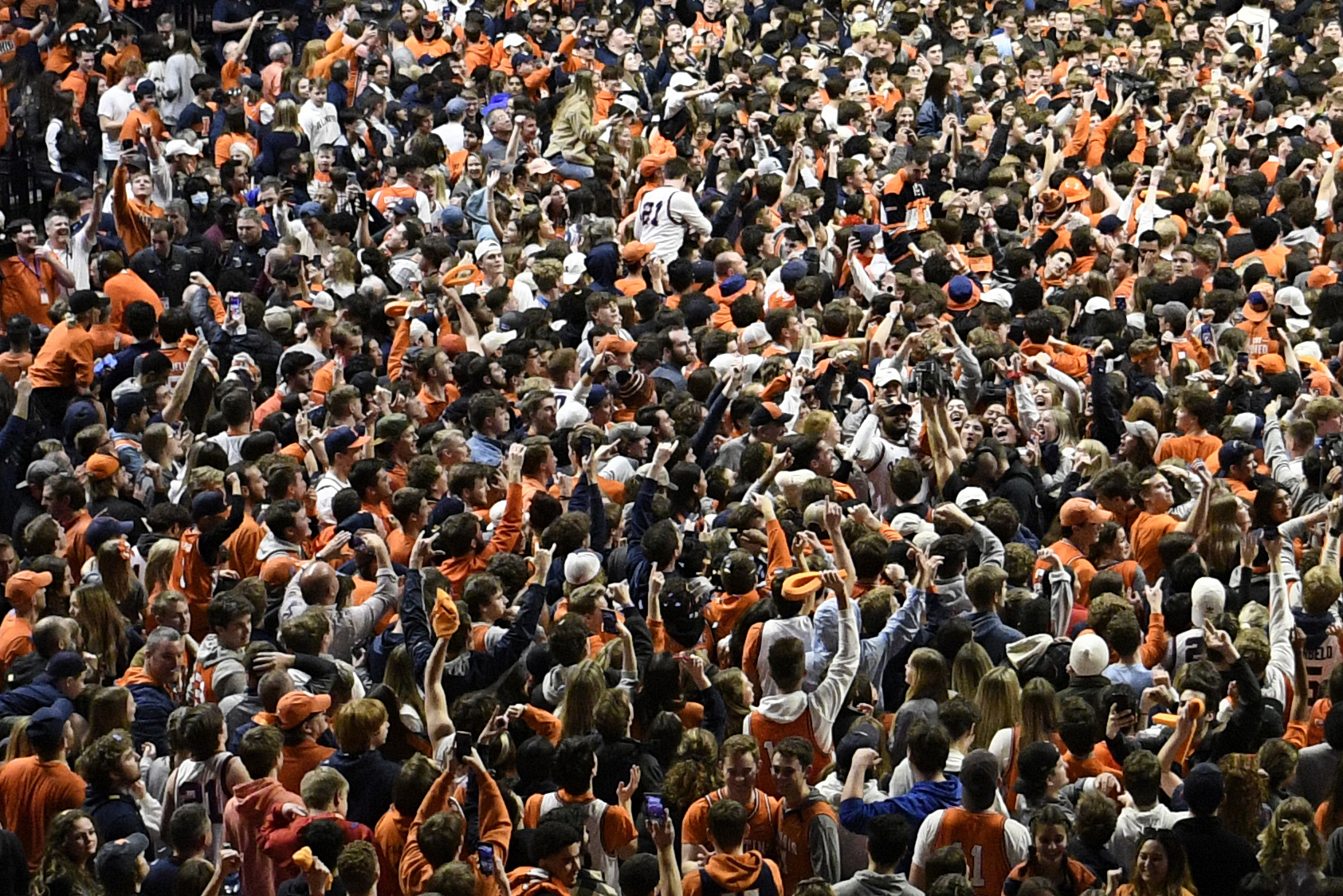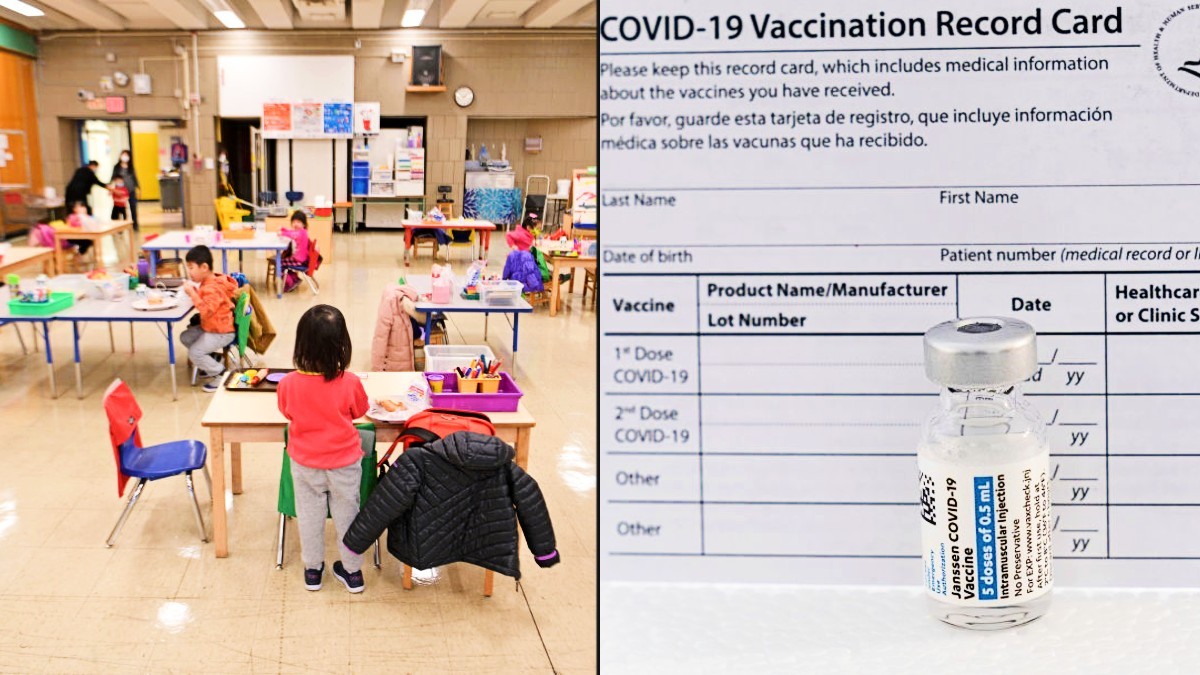What to Know
- According to the CDC, the "stealth" omicron variant, BA.2, now accounts for 52% of COVID circulating in the New York area right now, up from 39% a week ago. Its share is also up nationally. So are cases
- Hospitalizations and deaths, however, remain on the decline or stable and given the high rate of vaccination, authorities aren't expecting another severe surge from BA.2 and are continuing to drop mandates
- At this point, it's unclear if BA.2 is linked to more severe COVID cases or is more vaccine-resistant but WHO says it is "inherently more transmissible;" scientists are working to acquire more data
So-called "stealth" omicron variant BA.2, which is behind the latest COVID case uptick in the New York area, now accounts for 52% of the virus circulating in the region, establishing dominance within a week after owning a 39% case share in the CDC's prior update, fresh data released by the federal agency shows.
By comparison, BA.2 is responsible for about 35% of new infections nationally, up from a quarter last week.
In the Empire State, specifically, Wadsworth Center data shows omicron has accounted for 99.5% of all positive state samples tested there since January, while the BA.2 variant now makes up 42% of that, one of the lab's scientists said Monday.
Get Tri-state area news and weather forecasts to your inbox. Sign up for NBC New York newsletters.
BA.2 is expected to overtake the original omicron strain as the most prevalent in the United States in fairly short order, and while there is no evidence at this point to indicate it is more vaccine-resistance or linked to more severe infections, the World Health Organization has said it is "inherently more transmissible" than the strain that came before it. Still, officials are stressing they are not in "alarmist" mode.

Why not? Context is everything, as Gov. Kathy Hochul put it earlier this week.
New York's seven-day new case average per 100,000 residents is up 17.5% in the last week and 25.2% in the last two weeks. While the increase may appear to be a notable one, the raw numbers aren't that far apart, Hochul pointed out.
It's the difference between 9.7 new COVID cases per 100,000 residents and 11.4 new rolling cases per 100,000 over the last week and 9.1 vs 11.4 in two weeks.
The story is similar in New York City. The rolling weekly case average is up 13% over the rolling average for the prior four weeks, as of Wednesday morning, but the raw difference isn't even 100 cases and the average daily case total is below 750. In late January, it was well above 10,000.
A few months ago, the state was seeing 400 new cases per 100,000 residents, and the city was seeing unprecedented viral spread associated with omicron.
And while the statewide rolling positivity rate is the highest it's been since the end of February, it remains a touch below 2%. New York City's rolling average is 1.4%.
Most importantly, COVID hospitalizations remain starkly down. On Wednesday, Hochul reported 933 hospitalizations statewide, continuing a six-day stretch below 1,000 total admissions that hasn't been seen since the summer.
Deaths are stable or falling, with the governor reporting seven new ones overnight.
And while BA.2 may be triggering a more severe case uptick in other parts of the world, much of that is likely associated with lower vaccination rates, officials say.
More Coverage
New York City is on the same trend line, with the rolling hospitalization average down 35% and the rolling death average down 45%. Both are lagging indicators, so wouldn't see an increase until after any notable rise in cases, but at this point, both of those more vital metrics remain on a steady decline.
The governor has said she understands New Yorkers' anxiety, as have the mayor of New York City and his new health commissioner, and all agree the vigilant reopening process should keep moving forward as they monitor the numbers.
Significant progress in that regard has been made the last month and is expected to continue, with New York City Mayor Eric Adams announcing a day ago that the city's mask mandate for kids aged 2 to 4 would lift in schools and daycares on April 4 if core viral rates remain low, which they have even amid the latest case uptick.
The city wants to allow for two incubation periods to assess for any potential increase associated with unmasking vaccine-eligible kids in schools earlier this month. So far, there has been no significant increase associated with that change and the city's community COVID alert level remains low. It doesn't get any lower.
Asked Tuesday whether the current trends may mean the city's strictest-in-the-nation vaccine mandate for the private sector might also soon lift, Adams says he's taking a layered approach and isn't prepared to reevaluate that measure just yet.
"We're going to do it layer by layer and each layer we peel back we're going to do an analysis, 'Are we OK?' and we have to pivot and shift and come back here in a week and say we're going to do something different, we're going to do that," Adams said.
"When we feel that it's the right time to look at that, if we do so at all, because the work environment is an important environment, we're going to make that determination," he added. "We're not there yet."



